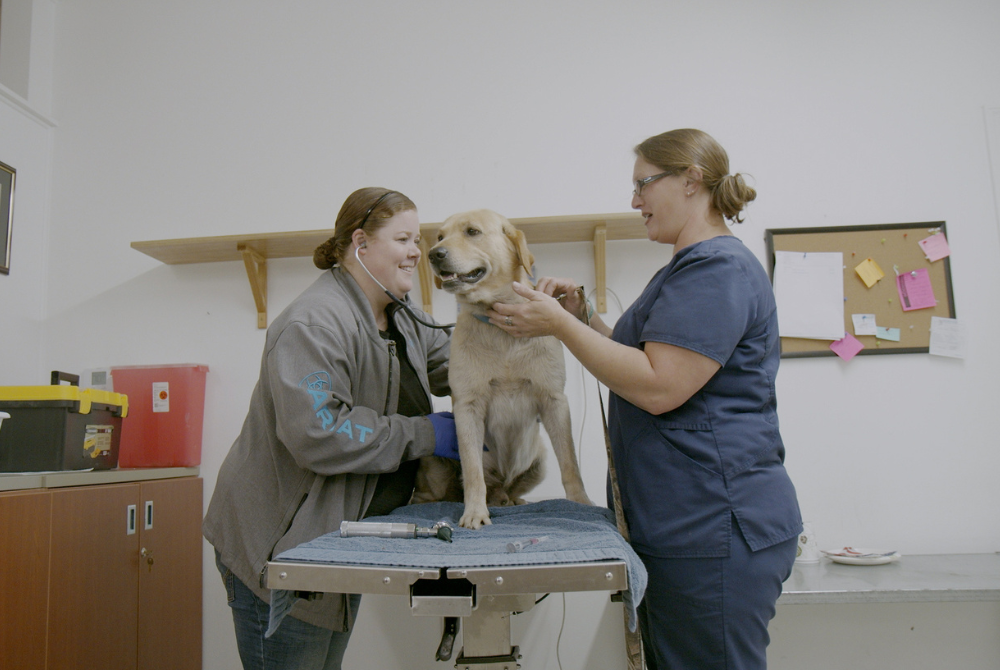by Nickolas Biermaier | Blue Heron Consulting

To maximize practice revenue growth in the veterinary industry, it’s crucial to focus on providing the highest standard of care for every patient, every time. In this week’s Vetsource blog post, guest author Nickolas Biermaier, Director of Hospital Operations at Blue Heron Consulting (BHC), continues BHC’s blog series on growing revenue. Last month’s BHC blog focused on building a dream team. This month, they’re exploring how practicing the best medicine will lead to the best outcomes for everyone.
Emphasizing the best medicine every time
Emphasizing the best medicine every time is an approach that benefits pets while also strengthening the veterinary practice’s reputation. Educating clients on all available options for their pet’s care is crucial to ensure they can make informed decisions. By thoroughly explaining the potential benefits, risks, and outcomes of each option, veterinarians empower clients to choose the best path for their pets.
Additionally, setting realistic expectations about the limitations of treatments ensures that clients are prepared for possible outcomes, reducing misunderstandings and promoting better emotional and practical preparedness. This approach not only enhances the pet’s quality of life but also strengthens the veterinarian-client relationship.
Implementation:
- Create clear protocols for different types of cases and conditions. This will help standardize the level of care and prevent any shortcuts based on perceived cost concerns.
- Offer educational resources to clients, explaining the benefits of certain treatments or diagnostic tests, so they feel empowered to make informed decisions.
Changing the mentality around client finances
Practicing “pocketbook medicine” can often lead to providing suboptimal care. The solution isn’t to shy away from discussing costs but to proactively present treatment options at varying price points, and to emphasize the importance of focusing on making choices that will positively impact the pet’s quality of life.
Implementation:
- Three-step recommendation: Always offer the gold standard first. Then, offer a secondary, more affordable option, if needed. This gives clients autonomy and helps them understand the options available without feeling judged or pressured.
- Use compassion in explaining the cost-to-benefit ratio of procedures. Clients are more likely to accept treatment if they understand why it’s necessary and how it can improve their pet’s health in the long term.
Improving staff morale and retention
Increasing ADT isn’t just about money — it’s about creating an environment where the team feels valued, supported, and motivated. Longer staff retention translates to more experienced, cohesive teams, which ultimately leads to better care for pets and improved operational efficiency.
Implementation:
- Set clear goals for clinical and financial outcomes. Ensure the team understands how their contributions to quality care can drive success.
- Create staff incentives, such as bonuses tied to hospital performance or recognition programs for those who go above and beyond in patient care or customer service.
Building a comprehensive diagnostic plan
Regular diagnostic testing — like blood work, urinalysis, and other screenings — can help catch issues early and prevent expensive treatments later. Offering baseline diagnostics early in a pet’s life or as part of regular wellness checkups can create a culture of proactive care.
Implementation:
- Develop packages that include routine diagnostic tests at a reasonable price, particularly for younger or middle-aged pets.
- Work with your lab provider to create discounted diagnostic bundles. These bundles can be presented to clients as a way to monitor their pet’s health over time while saving them money in the long term.
Focusing on the right medicine for every patient and aligning that with the financial health of the practice can create a more sustainable, rewarding environment for practice staff. By involving the team in the process, offering clear options to clients, and ensuring that the care offered is always in line with the best possible standards, you can improve ADT without compromising your ethical obligations to animal care.




